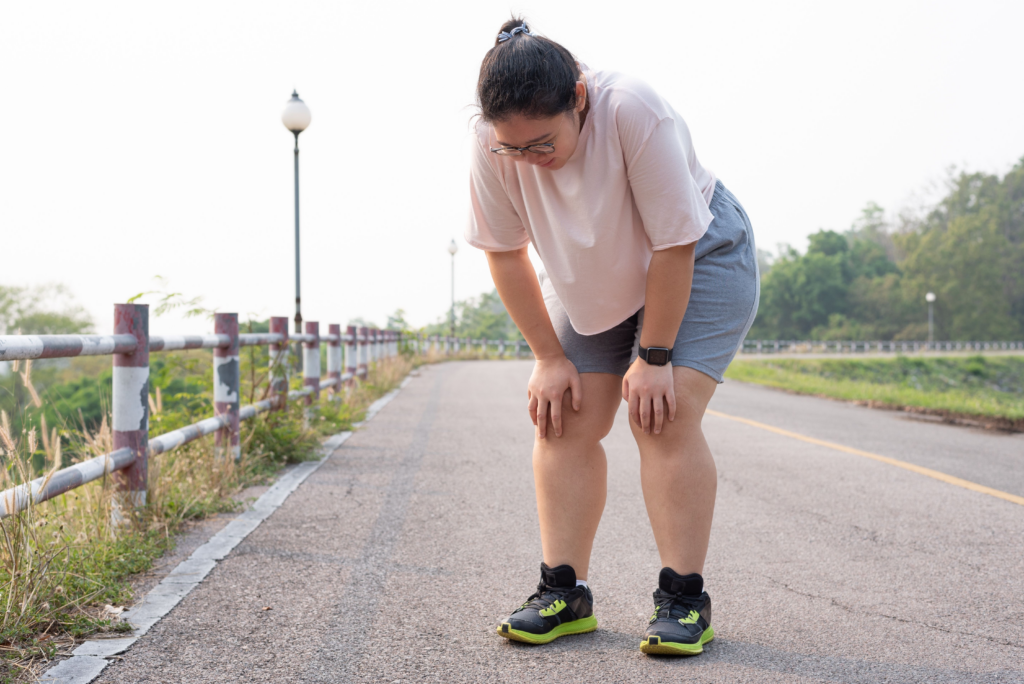

If you’re one of the millions of people living with lipedema, you know all too well the pain and discomfort of the condition. One of the most challenging aspects of lipedema is its effect on your knees, which can become swollen, painful, and difficult to move. But there is hope. Lipedema lipo is a safe, effective procedure that can help improve knee function and alleviate the symptoms of lipedema. By removing excess fat from the affected areas, this liposuction can reduce inflammation and pressure on the knees, allowing you to move more freely and with less pain. Best of all, the benefits of lipedema liposuction are long-lasting, giving you the relief you need to live your best life. So if you’re ready to discover the benefits of lipedema liposuction for improved knee function, read on to learn more!
Lipedema is a fat disorder that mainly affects women and causes enlargement of both legs due to fat deposits under the skin. It’s characterized as a “progressive disorder,” meaning it worsens over time. In severe and more progressive cases, the trunk and upper body may also be affected, including the arms and upper back, and it’s often misdiagnosed and incorrectly treated as general obesity.
Lipedema is a disease that leads to the excessive buildup of fat cells, primarily in the arms and legs. Going far beyond the appearance of extra pounds, those who suffer from Lipedema often have large pockets of fat on their limbs that appear disproportionate compared to the rest of the body. Medical professionals often misdiagnose and dismiss lipedema as simple obesity, leaving affected women with an endless cycle of disappointment, frustration, and pain. Lipedema does not respond to a diet and exercise routine, yo-yo dieting, or juice cleanses.
Women suffering from Lipedema often report the disease associated with painful symptoms that trigger difficulties in dealing with everyday activities. Excessive swelling often comes with pain, numbness, and bruising. In its advanced stages, Lipedema can impact mobility and provoke vascular and lymphatic swelling, leading to further medical complications.
Ultimately, effective treatment will require surgical intervention to alleviate the appearance and pain of symptoms. Liposuction performed on the affected limbs is generally the most effective treatment. Removing diseased fat deposits helps reduce swelling of the limbs and alleviates the pain that holds patients back from everyday activities.
This surgical treatment can provide various benefits and relieve the symptoms you are experiencing from lipedema. Dealing with lipedema can be difficult, especially if you are just now starting to take control of it.
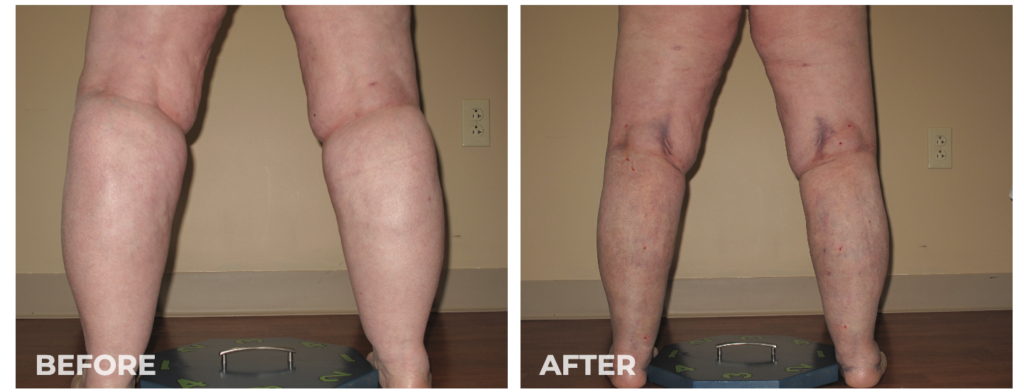

Lipedema reduction surgery is different from cosmetic liposuction. Studies have shown that women with Lipedema have impaired lymphatic function. Lymphatic fluid promotes the growth of more fat cells, which can overwhelm the lymphatic capillaries (branch-like blood vessels). Extra care must be taken to avoid injuring the lymphatic system and worsening an already stressed system. Studies have shown that lymphatic function can improve after this type of liposuction in women with Lipedema using blunt cannulas, generous tumescent anesthesia and special surgical techniques. Lipedema reduction surgery aims to remove the fibrous tissue and maximally reduce the lipedema tissue. It is a “debulking” surgery, not a cosmetic surgery.
One of the most beneficial aspects of lymph-sparing liposuction is that the treatment does not rely on general anesthesia. While general anesthesia is used for various treatments, it is generally not recommended for individuals with lipedema. Instead, lymph-sparing liposuction uses tumescent anesthesia to avoid these unwanted complications. General anesthesia can cause severe complications and even death in up to 0.3% of liposuction treatments. Relying on tumescent anesthesia ensures the anesthetic fluid has been distributed throughout the tissue and it has had time for all the fat tissue to gel. Patients are conscious for the duration of treatment, while the tumescent liquid acts as a local anesthetic to the treatment area. Patients may take pain pills ahead of time to help with discomfort and sometimes use laughing gas. However, through the process, patients feel little pain and, if anything, pressure in the area being treated.
Perhaps the most noticeable benefit to lymph-sparing liposuction is how it can reduce the amount of subcutaneous fat tissue in the body. Lipedema reduction surgery significantly reduces fat tissue and removes fibrous tissue, making the limbs lighter, smaller, less tender, and smoother. Following your physician’s guidelines is critical to reducing swelling and inflammation before the treatment. This is done by wearing compression garments and wraps and receiving manual lymph drainage for several weeks following lipedema surgery and beyond. Patients wear medical-grade compression clothing for at least eight weeks, and manual lymph drainage and massage are typically recommended as an ongoing and regular treatment.
Your tissue will be decongested, making your liposuction treatment as successful as possible. Some slight swelling and bruising may return immediately following the procedure, but this is expected and should subside over time. Some patients also report numbness as their nerves in the treated areas respond to treatment. Numbness may last for several months and up to one year, but compared to the reduction in fat tissue; patients still see this as a huge improvement. Compression is also critical to be maintained after the lipedema surgery, as the lymphatics are re-established. The lymphatic function is often improved.
By reducing the amount of subcutaneous fat tissue, you can reduce any pain associated with lipedema. Lipedema reduction surgery, sometimes referred to as Lymph sparing liposuction, will help you increase mobility without having the pain you have been feeling with lipedema since it started. This is huge for women with lipedema, especially because the pain and bruising is the leading symptom of seeking treatment. Women report a significant improvement in their ability to move around more freely, exercise more regularly, and enjoy day-to-day activities that were previously off-limits. Bumping into a chair or a corner no longer causes large bruises, playing with the family dog doesn’t cause pain when they jump, and everyday activities are no longer considered out of reach.
The disproportionate fat accumulation in Lipedema causes mechanical imbalances that result in significant orthopedic problems. Knee joint degeneration is the most common arthritic condition of lipedema patients and is often disabling.
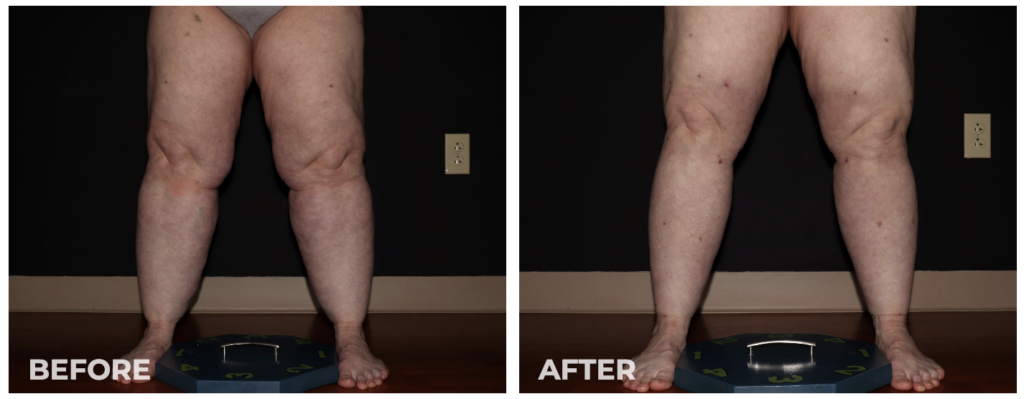

In our experience over the last five years, we’ve documented knee mechanics, including the range of motion, flection, gate, q-angle, and knee joint angulation (varus or valgus) in the joint. We found that lipedema reduction surgeries have improved knee flection by 8 degrees. That can make the difference between somebody climbing stairs, getting in and out of a tub, or getting in and out of chairs. This can be a huge difference! We’ve also seen about 8 degrees in valgus knee rotation, evening the pressure on the knee joint. As a result, this allows knee joints to last longer, avoiding arthritis that can result from rotation. Overall, 84% of patients who undergo lipedema reduction surgery over the 4-5 years had improvement in their gate and mobility leading to more accessible and enjoyable lives.
The procedure typically takes several hours to complete, depending on the extent of the lipedema.
Patients may experience some discomfort and swelling in the days following the procedure, but this can be managed with pain medication and other treatments.
Most patients can return to work and other activities within a week or two, although this may vary depending on the extent of the liposuction and individual healing rates.
If you are considering lipedema liposuction, finding a qualified and experienced surgeon specializing in this procedure is important. Look for a surgeon with a proven track record of success with lipedema patients and who prioritizes patient safety and comfort.
You can research surgeons online, read reviews from previous patients, and schedule consultations to discuss your options and ask any questions you may have. With the right surgeon, you can enjoy the benefits of lipedema liposuction for improved knee function and overall quality of life.
Living with lipedema can be a challenging experience, but there is hope. Lipedema liposuction is a safe and effective procedure that can help improve knee function and alleviate the symptoms of lipedema. Whether you are struggling with pain, swelling, stiffness, or reduced mobility, lipedema liposuction can provide a long-lasting solution that allows you to live your best life. To learn more about this procedure and whether it is right for you, consult a qualified lipedema liposuction surgeon today.


Have you ever heard of lipedema? It’s a condition that affects millions of women worldwide. It causes an abnormal buildup of fat cells in the legs, buttocks, and hips, which can lead to pain, discomfort, and even disability. While there are several treatment options available, liposuction has become a popular choice among patients. However, not all liposuction procedures are the same. In fact, there are two distinct types of liposuction that are often confused: lipedema liposuction and cosmetic liposuction.
Understanding the key differences between these two procedures is essential for anyone considering liposuction for lipedema or cosmetic purposes. In this article, we’ll take a closer look at lipedema liposuction and cosmetic liposuction and explain what sets them apart. So, whether you’re a patient or a healthcare provider, keep reading to discover the crucial distinctions between these two types of lipo.
Lipedema is a chronic condition that affects mainly women, although it can occur in men as well. It’s characterized by an abnormal accumulation of fat and fibrous tissue in the legs, hips, and buttocks, which can cause pain, swelling, and tenderness. Lipedema is often misdiagnosed as obesity, lymphedema, or cellulite and can be a source of emotional and physical distress for those affected. As it progresses, Lipedmea can cause impairment in lymphatic function in the affected areas. There’s no cure for lipedema, but several treatment options are available, including liposuction.
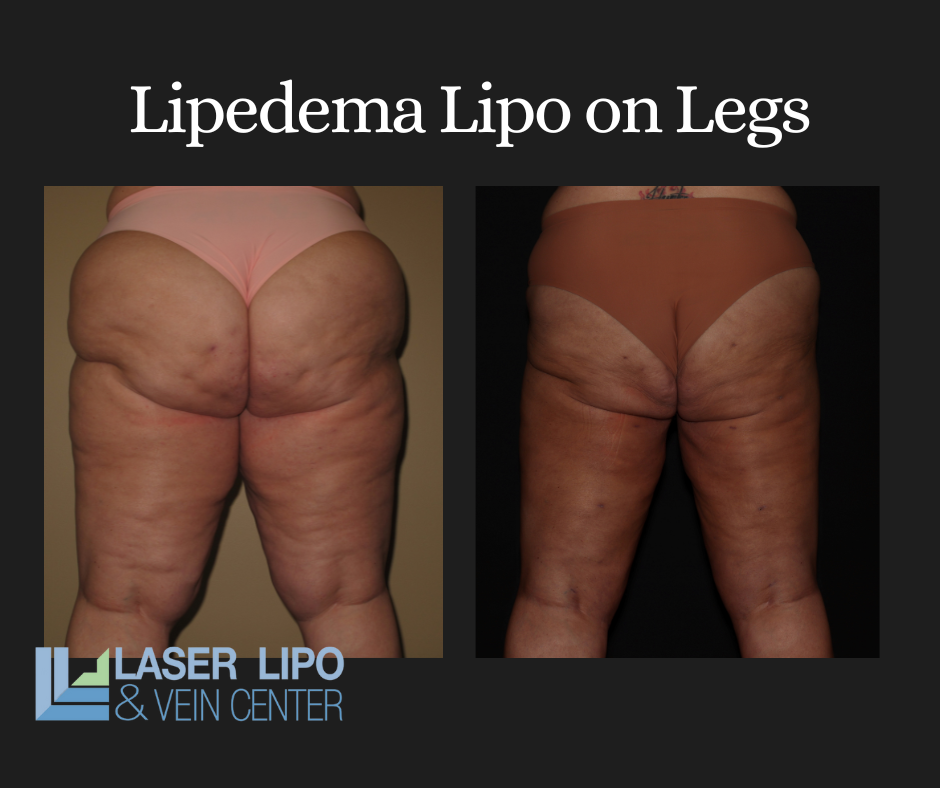

Lipedema liposuction is a specialized type designed to address the unique needs of lipedema patients. Unlike traditional cosmetic liposuction, which focuses on removing excess fat for aesthetic purposes, lipedema liposuction aims to reduce pain, improve mobility, and prevent further progression of the condition. Lipedema liposuction requires generous tumescent anesthesia and involves making small incisions in the affected areas. The surgeon then uses a specialized cannula to remove the excess fat cells while preserving the healthy tissue. The procedure can take several hours, depending on the extent of the lipedema.
One of the key differences between lipedema liposuction and cosmetic liposuction is that lipedema liposuction is the extra surgical technique used to protect the lymphatics, sometimes called “lymph sparing.” It also may require multiple sessions to achieve optimal results. Lipedema is a chronic condition that can’t be cured with a single procedure. Lipedema patients may also require ongoing maintenance sessions to prevent further progression. Often Lipedema Lymph Sparing liposuction is combined with Manual Extraction of the fibrous nodules caused by the lipedema disease.
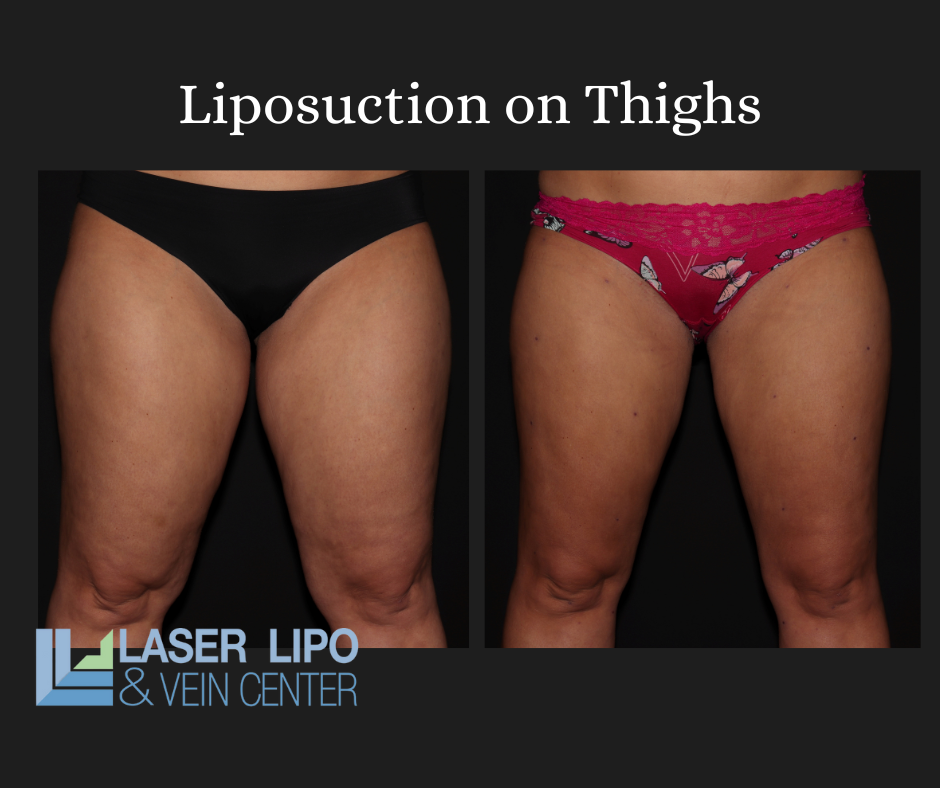

Cosmetic liposuction, also known as traditional liposuction, is a popular cosmetic procedure that’s designed to remove excess fat cells from various areas of the body, including the abdomen, thighs, and arms. Unlike lipedema liposuction, which is performed for medical reasons, cosmetic liposuction is performed for aesthetic purposes only.
While lipedema liposuction and cosmetic liposuction are both forms of liposuction, there are several key differences between the two procedures. Some of the most significant differences include the following:
Like any surgical procedure, lipedema liposuction and cosmetic liposuction carry some risks and side effects. Some of the most common risks and side effects include:
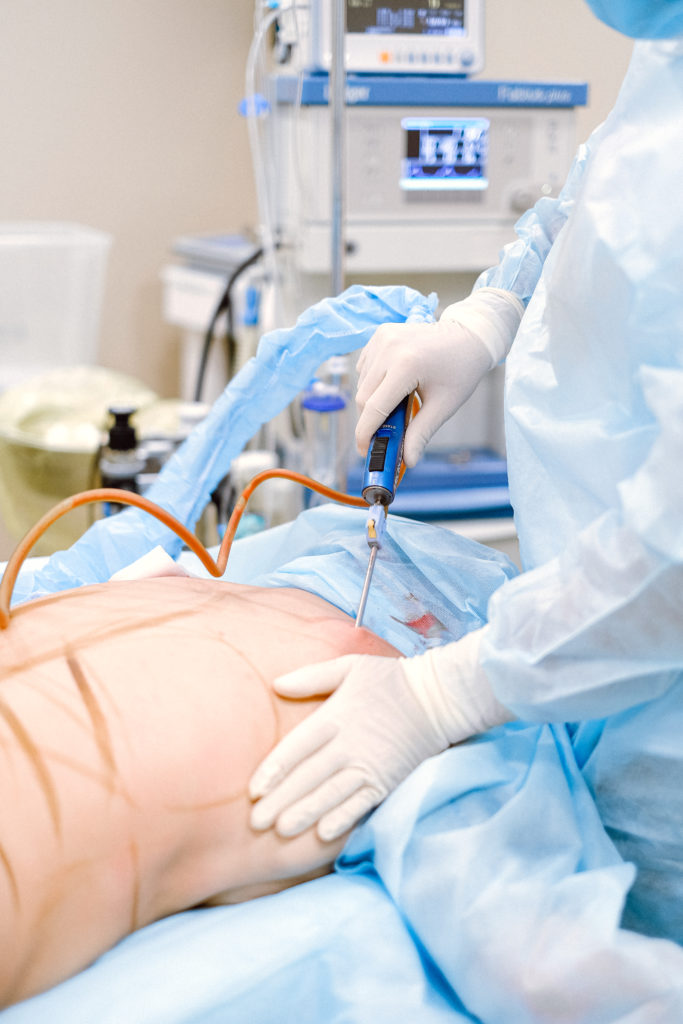

Recovery time and results can vary depending on the extent of the procedure and the patient’s individual health status. In general, patients can expect to experience some discomfort and swelling for several weeks after the procedure.
Patients undergoing lipedema liposuction may require compression garments and lymphatic massage to reduce swelling and promote healing. They may also need to avoid strenuous exercise and other activities for several weeks after the procedure.
Patients undergoing cosmetic liposuction can typically resume normal activities within a few days of the procedure. They may need to wear compression garments for several weeks to reduce swelling and promote healing.
Results from both procedures can be long-lasting, although patients need to maintain a healthy lifestyle to prevent further weight gain and the progression of lipedema.
Lipedema liposuction is typically recommended for patients with advanced lipedema who have not responded to other treatments, such as compression therapy and diet modifications. Candidates for lipedema liposuction should be in good overall health and have realistic expectations of the procedure.
Cosmetic liposuction is typically recommended for patients who are at or near their ideal weight but have stubborn areas of fat that are resistant to diet and exercise. Candidates for cosmetic liposuction should be in good overall health and have realistic expectations of the procedure.
Choosing the right surgeon for lipedema liposuction or cosmetic liposuction is crucial for achieving the best possible results. Patients should look for a surgeon who has experience in performing the procedure, a proven track record of patient outcomes, and a good reputation in the community. Lipedema is a disease that requires specialized knowledge and comprehensive treatment, including dietary counseling and medical-grade compression to optimize lymphatic function. Pre and post-surgery treatment are focused on lowering tissue inflammation and controlling the disease comprehensively for the best results.
Many plastic surgeons approach lipedema reduction surgery as an isolated surgical procedure and need to treat lipedema comprehensively, which can result in suboptimal results or recurrence of symptoms. It is highly recommended to choose a surgeon who treats lipedema disease comprehensively. Patients should seek a surgeon who diagnoses the disease and starts conservative treatment first. A surgeon who treats comprehensively will ensure conservative treatment has been optimized, as proceeding with surgery when inflammation is elevated can actually worsen the disease course. Once the proper overall treatment plan has been implemented, the surgeon should take the time to explain the procedure and answer any questions the patient may have.
The cost of lipedema liposuction and cosmetic liposuction can vary depending on several factors, including the extent of the procedure, the surgeon’s experience, and the geographic location.
Lipedema liposuction can be more expensive than cosmetic liposuction due to the specialized technique and multiple sessions required. Patients should check with their insurance provider to see if the procedure is covered under their policy.
Lipedema liposuction and cosmetic liposuction are two distinct types of liposuction that are often confused. While both procedures involve the removal of excess fat cells, they have different purposes, approaches, and techniques. Understanding the key differences between lipedema liposuction and cosmetic liposuction is crucial for anyone considering liposuction for medical or cosmetic reasons. Patients should consult with a board-certified surgeon to determine which procedure is right for them and to achieve the best possible results.


On March 6th, we honor and celebrate the awareness, understanding, and support of those with lymphedema. Lymphedema is a chronic condition that is often overlooked, and World Lymphedema Day was created to bring awareness to this condition and support those living with it.
March is Lymphedema Awareness month, a time to put on your light blue ribbon and find creative ways to participate in educating the world on lymphatic diseases. The highlight of the month, World Lymphedema Day, falls on March 6th this year. The Lymphatic Network hosts a wide range of events worldwide for the community to participate in digitally and in person. Sign up for events and presentations on their home page, or use their guide to getting involved and participating on World Lymphedema Day. The clinical, patient, and advocacy communities and the private sector join forces all month long to increase awareness of this chronic condition.
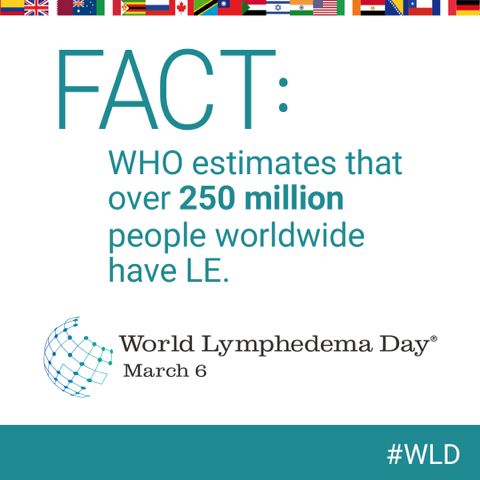

The United States Senate established World Lymphedema Day in 2016 in response to a Senate bill written by the Lymphatic Education & Research network. Advocates celebrate each March annually, with the primary focus on educating the world on all lymphatic diseases: primary and secondary lymphedema (LE), lipedema (LI), lymphatic filariasis (LF), lymphatic malformations (LM), and the full lymphatic continuum (LC) of diseases impacted by the lymphatic system.
Lymphedema is when excess fluid accumulates in the body’s tissues, causing swelling. It can develop when the lymphatic system, which helps move fluid to the bloodstream, is damaged or blocked. There are two types of lymphedema: primary lymphedema, which is caused by a genetic disorder, and secondary lymphedema, which is caused by an injury or medical condition. Lymphedema can affect any body part but is most commonly found in the arms and legs.
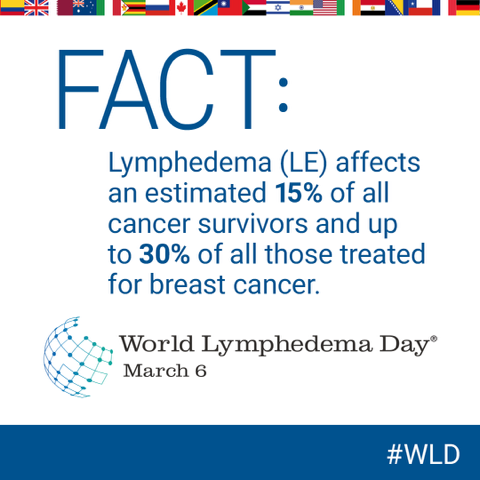

Lymphedema is a condition that occurs when lymphatic fluid, a transparent liquid composed of fat, water, salts, and proteins, begins to pool and accumulate in the arms and the legs. The initial and most predominant symptom indicating the presence of Lymphedema is significant swelling of these extremities. Medical experts point to damaged lymph vessels as the cause behind fluid retention leading to Lymphedema.. Other potential causes for fluid retention are linked to infections, genetics or underlying medical conditions, especially cancer and its treatment. Keep reading to learn more about the treatment of Lymphedema in St Louis.


The most common cause of lymphedema is damage to the lymph nodes or lymph vessels due to cancer treatments such as radiation and chemotherapy. Other causes of lymphedema include surgery, trauma, infection, and other medical conditions such as congestive heart failure or cirrhosis of the liver.
In some cases, the cause of lymphedema is unknown. This is called idiopathic lymphedema. It is most often seen in women over the age of 50.
The most common symptom of lymphedema is swelling in the affected area. This swelling can be mild or severe and can range from a feeling of heaviness to visible swelling. Other symptoms of lymphedema include pain, tightness, aching, and stiffness in the affected area. In some cases, lymphedema can also cause changes in the skin, such as thickening, discoloration, and itching.
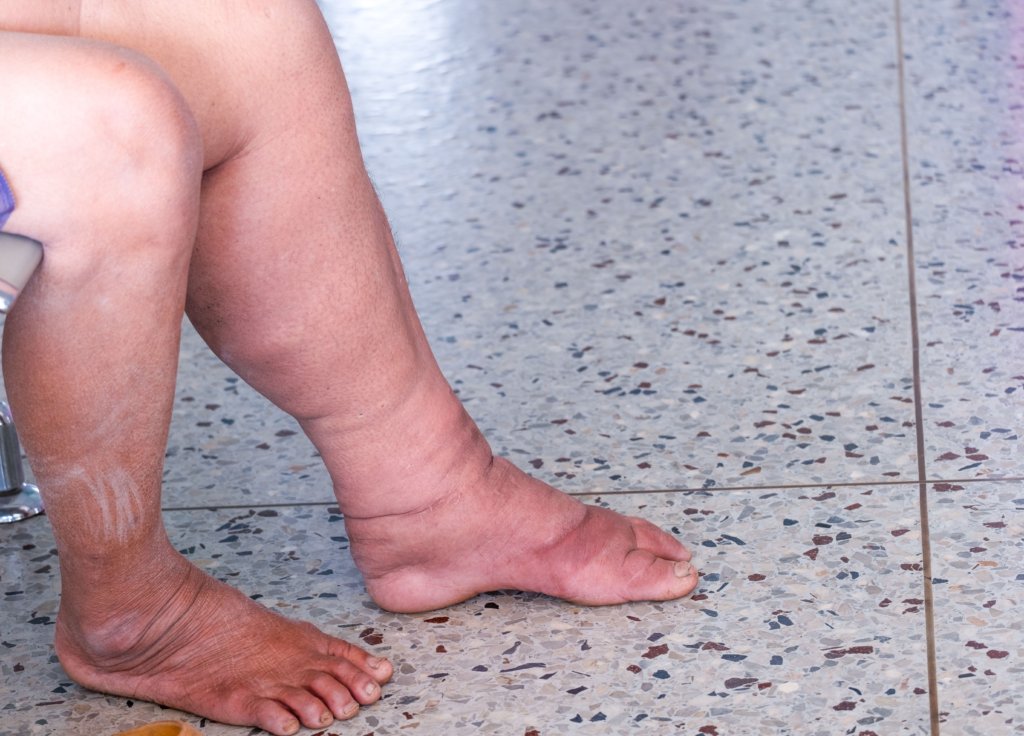

It is widely understood and accepted that Lymphedema can be an inherited medical condition and, as a result, is recognized under three distinct categories. Congenital Lymphedema refers to symptoms that develop in early childhood. Lymphedema Praecox refers to symptom development that occurs during adolescence, while Lymphedema Tarda refers to symptoms that show up in patients later in life. Lymphedema quite commonly develops in patients due to a traumatic injury damaging lymphatics. This type of trauma is generally linked to removing lymph nodes during surgical procedures related to cancer treatment or radiation. Infection is a second factor closely linked to the development of Lymphedema.
The treatment of lymphedema depends on the type and severity of the condition. Mild cases of lymphedema can often be managed with lifestyle changes such as maintaining a healthy weight, exercising regularly, and avoiding repetitive activities that can cause further damage to the lymphatic system.
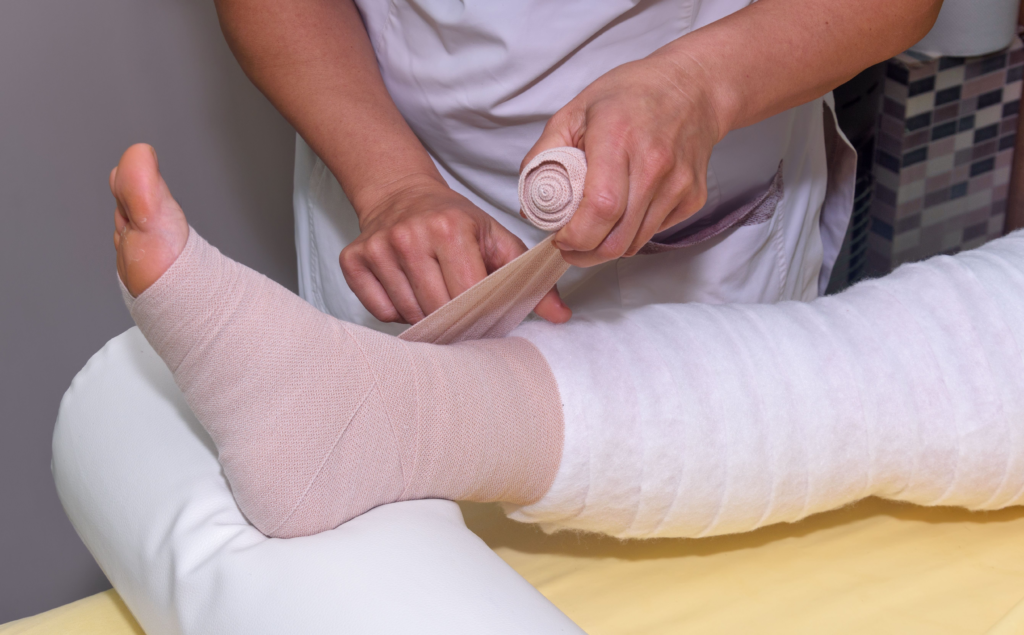

For more severe cases of lymphedema, treatments such as manual lymphatic drainage, compression garments, and physical therapy can be used to reduce swelling and improve the function of the lymphatic system. Surgery may sometimes be necessary to remove excess fluid and reduce swelling.
In addition to World Lymphedema Day, March is also Lymphedema Awareness Month. This is a necessary time to spread awareness about lymphedema and to support those living with the condition. There are several ways to get involved, from attending events and spreading the word on social media to donating to organizations that support lymphedema research.
The color for World Lymphedema Day is blue, and the lymphedema awareness ribbon is silver. Wearing these colors can be a great way to show your support for those living with lymphedema.
There are many ways to celebrate World Lymphedema Day. One of the best ways is to spread awareness and educate others about the condition. You can do this by talking to your friends and family about lymphedema, sharing posts on social media, attending events, and donating to organizations that support lymphedema research.
Another way to show your support is to wear blue and the lymphedema awareness ribbon on March 6th. This is a great way to raise awareness and show your support.
And finally, remember to reach out to those living with lymphedema. A simple message of support can go a long way in helping those living with this condition feel seen and heard.
Several great resources are available if you want to learn more about lymphedema. The National Lymphedema Network is a great place to start, as they provide information about the condition, resources for finding treatment, and support for those living with lymphedema.
The Lymphatic Education and Research Network is another excellent resource. They provide a wealth of information about lymphedema, from the latest research to support groups and resources for care and treatment.
World Lymphedema Day is an important day for honoring and celebrating those living with lymphedema. It is a day to raise awareness and support those living with the condition. There are many ways to get involved in celebrating World Lymphedema Day, from spreading awareness to reaching out to those living with the condition. We hope that you will join us in celebrating World Lymphedema Day! Contact Laser Lipo and Vein Center to schedule a consultation!
Back pain is a common problem that affects many people. But for those who suffer from lipedema, it can be much more than just an annoyance. Lipedema is a chronic condition that causes painful swelling in the legs and buttocks. Fortunately, there is a life-changing solution – lipedema surgery.
In this article, we will explore what lipedema is, its symptoms, causes, diagnosis, and treatment. We will also discuss the different types of lipedema surgery and the benefits of undergoing this procedure. Plus, we’ll look at the recovery process and the success stories of those who have gone through it themselves.
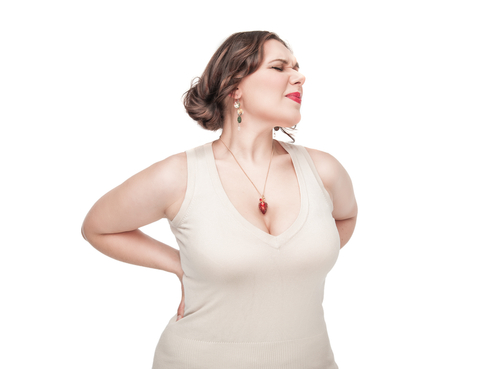

Lipedema is a condition that primarily affects women and is characterized by painful swelling of the legs and buttocks. It is known as a “painful fat disorder” because it causes fat to accumulate in the lower body, leading to discomfort and difficulty moving.
Lipedema can be difficult to diagnose because its symptoms are often similar to other conditions, such as obesity and lymphedema. Additionally, the cause of lipedema is still unknown, although it is believed to be a genetic disorder triggered by hormonal changes.
The most common symptom of lipedema is swelling of the legs and buttocks, and oftentimes the arms and abdomen. This swelling is usually symmetrical and occurs mainly in the lower parts of the body. It can also cause a feeling of tightness in the affected area, as well as aching, burning, and tenderness. The skin in the affected area may also appear dimpled, and the affected person may experience difficulty walking and standing for long periods.
In addition to physical symptoms, people with lipedema may also experience psychological symptoms such as low self-esteem and depression.
Lipedema can be difficult to diagnose because its symptoms are often similar to other conditions, such as obesity and lymphedema. To diagnose lipedema, your doctor will do a physical exam and ask about your medical history. They may also order tests, such as an ultrasound or MRI, to get a better look at the affected area.
Once lipedema is diagnosed, treatment may include lifestyle changes, such as diet and exercise, to reduce swelling and pain. Compression garments can also be used to help reduce swelling. In more severe cases, liposuction or liposculpture may be recommended to remove the excess fat.
A lot of women with lipedema have back pain because the “shelf” of weight accumulated on the lower back distorts the spine. The distortion from the fat lobule over the shelf will be sore if patients are on their feet or sitting for long periods. Many patients have chronic lower back pain without any relief because the constant existence of heavy lipedema tissue causes it.


Within a day or two after the tissue removal, patients report experiencing relief never experienced before. Unlike a pulled back muscle or a pinched nerve, surgery and the removal of this area’s fatty tissue and fluid is the only way to get relief.
Lipedema surgery is a life-changing solution for those suffering from lipedema of all types and stages, and especially with chronic secondary issues like back pain. This surgery involves the removal of excess fat from the affected area through liposuction or liposculpture. This surgery can help reduce the swelling, discomfort, and pain associated with lipedema. It can also improve mobility, reduce the risk of infection, and improve self-esteem.
There are many benefits to undergoing lipedema surgery. It can help reduce the swelling and pain associated with lipedema and improve mobility. It can also reduce the risk of orthopedic complications and improve self-esteem. Additionally, lipedema surgery can help reduce the risk of developing lymphedema, which can be a severe complication of lipedema. For patients with back pain, the surgery can provide almost immediate relief and allow them to have the ability for daily tasks once again once impossible – as simple as getting a good night’s rest, or the ability to perform accessible exercises more comfortably, like yoga and deep, restorative stretches.
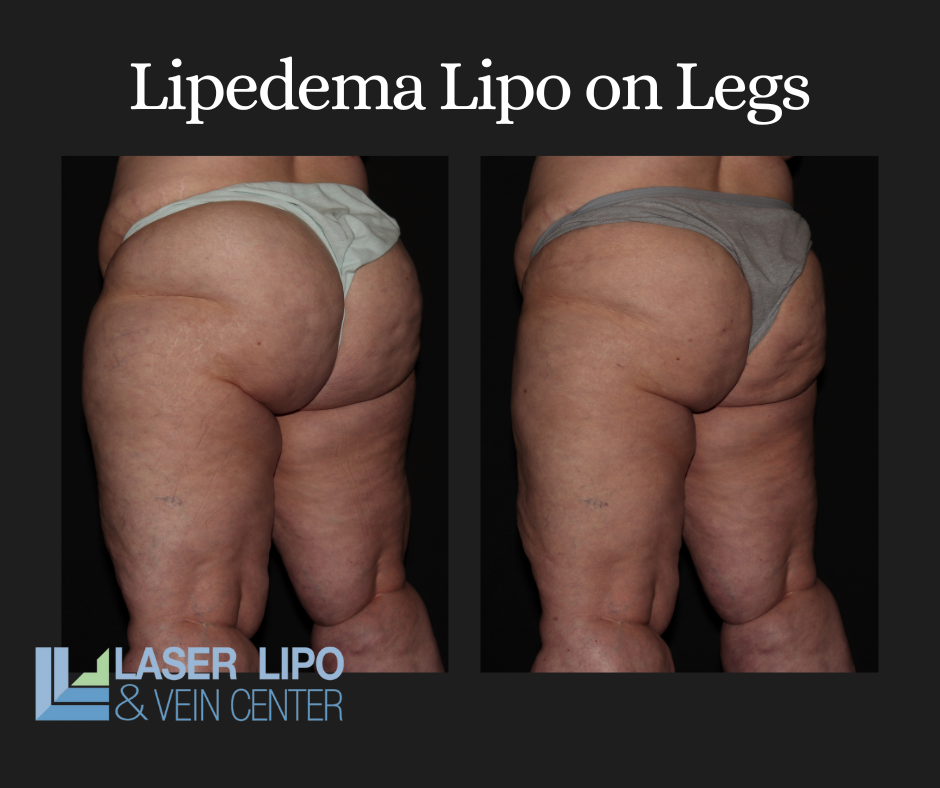

Lipedema surgery can be an effective treatment for those who have experienced significant weight loss. After weight loss, the skin in the affected area may be loose and saggy. Lipedema surgery can help to tighten and firm the skin and reduce the swelling and pain associated with lipedema.
Recovery from lipedema surgery can take several weeks. During this time, it is important to rest and avoid strenuous activities. Your doctor may also recommend compression garments to help reduce swelling and improve comfort.
Lipedema surgery is a life-changing solution for those suffering from lipedema. It can reduce the swelling and pain associated with lipedema and improve mobility. It can also reduce the risk of infection and improve self-esteem. If you are suffering from lipedema and are looking for a solution, contact Dr. Wright and Laser Lipo and Vein Center for help with lipedema and back pain.


Have you ever wondered why some women have no issues maintaining their weight, despite your constant struggle to lose weight no matter what you do? Have you ever heard of Lipedema Legs? If you’re a woman and have noticed weight gain in your lower body that you can’t seem to control, you may have lipedema. Lipedema is a chronic and progressive medical condition that affects the limbs (and sometimes the abdomen, too!) of women. In this blog, we’ll be exploring the causes, symptoms, and treatment options for lipedema legs.
Lipedema is a medical condition that affects many women worldwide. The condition is also known as Lipoedema. It is a disorder that causes fat to accumulate in the legs, hips, buttocks, arms, and/or abdomen of many women. Fat accumulation occurs in the form of nodules and can cause pain, inflammation, and swelling. It is estimated that 11% of women in the United States suffer from lipedema, and most are unaware of their condition.
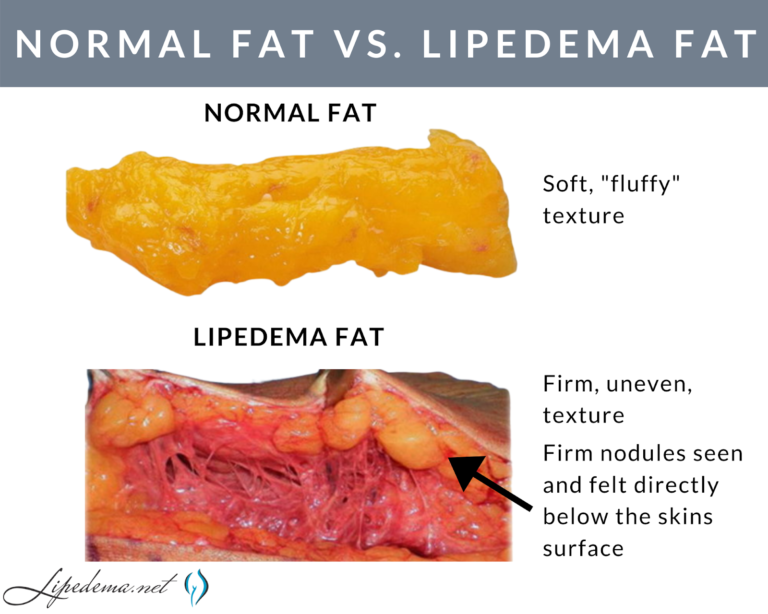

Lipedema is believed to be linked to genetics and hormones. Research suggests that hormones such as estrogen may play a role in the development of lipedema. It is also thought that lipedema has a vital hereditary component, meaning if your mother or grandmother had lipedema, you might be more likely to develop the condition. The symptoms of lipedema legs vary from person to person. The most common symptom is swollen legs, especially in the lower legs. Other symptoms include pain, tightness, and discomfort. In some cases, lipedema can cause pain, numbness, and tingling in the legs. The leg fat can also be easily bruised and is often resistant to diet and exercise.
Lipedema legs can cause a wide range of symptoms, including swelling, pain, and tightness in the legs. The leg fat can also be easily bruised and is often resistant to diet and exercise. In some cases, lipedema can cause numbness and itchiness or tingle in the legs. In addition, leg fat can cause an uneven weight distribution, resulting in pain and discomfort.
The symptoms of lipedema can vary from person to person. Some people may experience little to no symptoms, while others may experience more severe symptoms. The severity of the symptoms can also vary over time.
The diagnosis of lipedema legs is based on a physical examination and a review of the patient’s medical history. The doctor will look for signs of fat accumulation in the legs, hips, and buttocks. They may also check for signs of inflammation and swelling. The doctor may also perform a lipedema test, which involves measuring the circumference of the legs, hips, and buttocks. This test can help determine if the patient has an accumulation of fat in the affected areas. In addition, the doctor may perform a stemmer sign test.
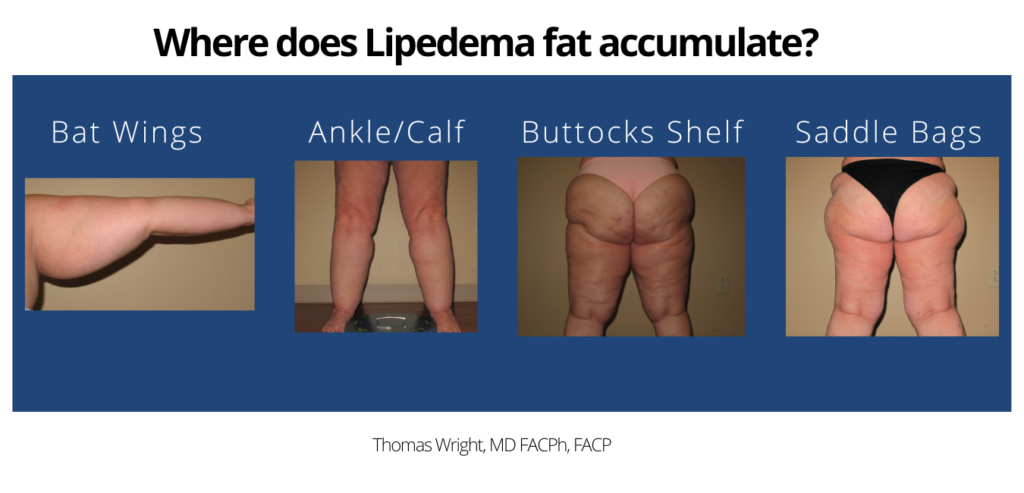

The stemmer sign is a test used to diagnose lipedema. The test involves pressing the thumb against the skin of the affected area. If the skin does not indent, this is a sign of lipedema. This test is used to differentiate between lipedema and other causes of swollen legs, such as lymphedema. The stemmer sign test can also help determine the severity of the lipedema. In mild cases, the skin may indent slightly, while in more severe cases, the skin may not indent at all. This can help the doctor determine the best course of treatment for the patient.
Once the diagnosis of lipedema legs has been made, the doctor will recommend a treatment plan. The treatment plan will vary depending on the severity of the condition. In mild cases, the doctor may recommend lifestyle changes such as diet and exercise focused on decreasing inflammation triggers. Medical-grade compression help reduce the inflammation is lipedema tissue in the legs. In more severe cases, the doctor may recommend medication or surgery. Medication and surgery are typically used to reduce the swelling and inflammation associated with lipedema. Medication can help reduce the number of fat cells in the affected area and can also help reduce swelling and inflammation. Surgery can help remove fat cells from the affected area and can also help reduce swelling and inflammation.
If you think you may have lipedema, you must see a doctor. The doctor will perform a physical examination and review your medical history. They may also perform a lipedema test and a stemmer sign test. Once the diagnosis has been made, the doctor will recommend a treatment plan. Treatment may include lifestyle changes, medication, and surgery.
Lipedema legs can be a difficult condition to live with, but with the right treatment, it is possible to manage the disease. With the right treatment, you can live a healthier and more active life.
Pregnancy can be an incredibly joyous and special time for a woman, yet for those with lipedema; it can also be a time of physical and emotional distress. Lipedema is a chronic and progressive condition that causes an abnormal and disproportionate accumulation of fat in the legs, hips, buttocks, and arms. During pregnancy, lipedema symptoms can become exacerbated, leaving many women feeling overwhelmed and frustrated. Fortunately, some strategies and tips can be employed to help manage lipedema and pregnancy during this important period of a woman’s life. With the right guidance and awareness, pregnant women with lipedema can still enjoy a healthy and happy pregnancy.
There is currently no known cause of lipedema. However, some researchers speculate that lipedema may originate from a dysfunctional lymphatic system. As a result, the lymphatic fluid in the body is unable to drain properly, causing fluids to build up in the legs, hips, buttocks, and arms. As the condition progresses, the excess fat in the limbs can become firm, fibrotic, and more difficult to manage. Some research suggests a potential genetic link to lipedema. In addition, certain lifestyle factors, such as obesity, hormonal changes, and certain medications, can exacerbate symptoms of lipedema and make the condition more difficult to manage.
Early signs and symptoms of lipedema include a sensation of heaviness and discomfort in the legs and lower body. As the condition progresses and more fat builds up, legs may swell and become more painful. Swelling in the legs may cause the ankle to enlarge and the skin to become thick and tender.
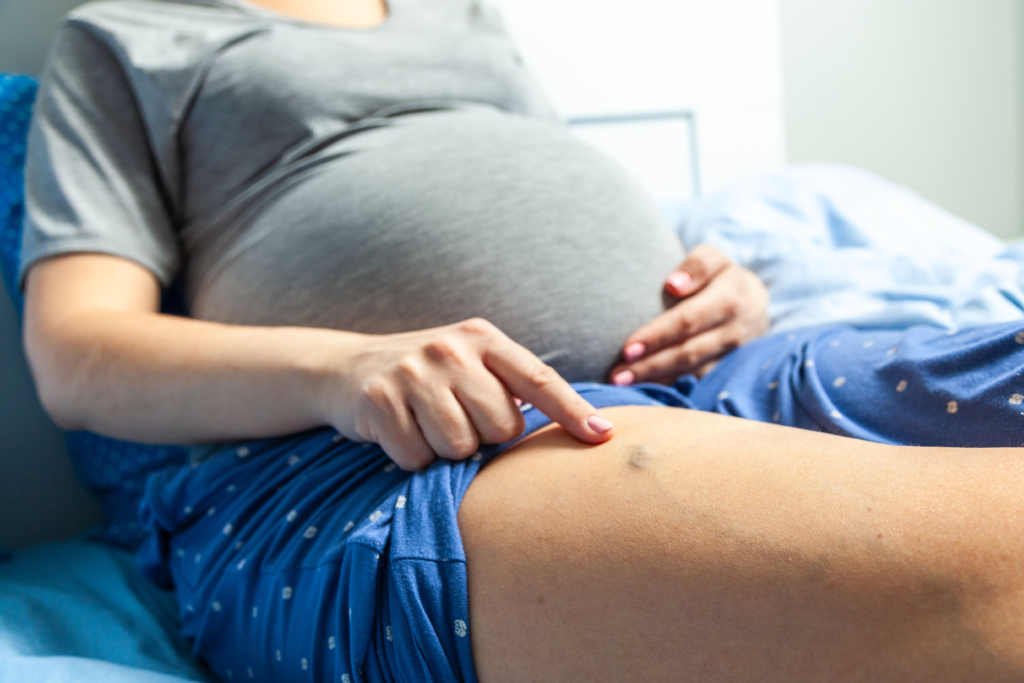

The skin on the legs may also become hardened, thick, and discolored due to excessive fat deposits. As lipedema progresses, it can also cause the hips, buttocks, and abdomen to swell and become enlarged. The upper and lower body may become disproportionate, with the upper body appearing underdeveloped while the lower body appears disproportionately large.
During pregnancy, hormones and increased fluid retention can exacerbate lipedema symptoms, causing the legs and lower body to swell even more. Many women may experience lipedema for the first time during pregnancy and can feel overwhelmed by the sudden and significant changes to their bodies. Unfortunately, many healthcare providers are unfamiliar with lipedema and its symptoms, making it difficult for women with lipedema to receive the proper support and treatment during pregnancy. Pregnant women with lipedema should seek out a skilled and knowledgeable healthcare provider who is aware of the signs and symptoms of lipedema and can provide the proper support and treatment.
During pregnancy, women with lipedema should make an extra effort to stay hydrated and consume plenty of fiber and water. Increasing fiber intake can help reduce inflammation in the body and assist in easing swelling in the legs and abdomen. In addition, wearing compression garments can also help to reduce swelling in the legs and lower body. It is important that pregnant women with lipedema wear graduated compression stockings throughout the day and while sleeping. It is also essential that pregnant women with lipedema get plenty of rest and use stress-reduction strategies to manage anxiety and reduce fatigue. Managing stress can go a long way in helping to ease swelling in the legs, calm the mind, and promote a healthy pregnancy.
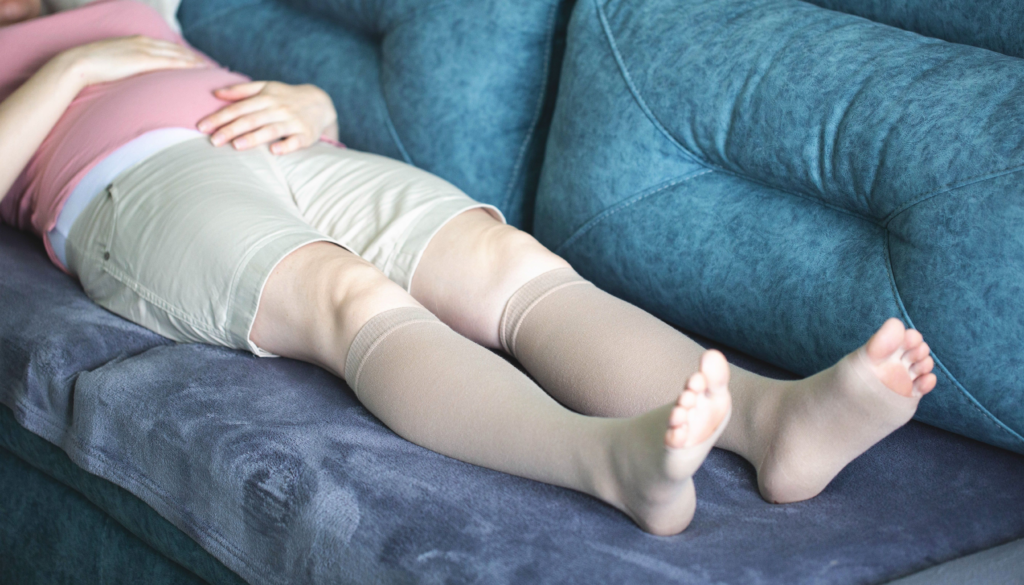

Currently, there is no known cure for lipedema. However, there are treatment options that can help to improve symptoms, mobility, and overall quality of life. Wearing Compression Garments – Compression garments, such as compression socks, compression pants, or knee-highs, can help to reduce swelling in the legs and lower body. It is essential to wear compression garments during the day and while sleeping to get the most benefits. Diet – Maintaining a well-balanced diet that is rich in fiber, protein, and calcium can help to improve overall health and reduce inflammation in the body. Eating a variety of healthful foods can also help to reduce cravings and prevent feelings of nausea during pregnancy. Exercise – Participating in gentle forms of exercise can help improve overall health and reduce symptoms of lipedema. Exercises should be modified to accommodate for swelling in the legs and ankles. Lifestyle – Practicing good stress management and creating a healthy lifestyle can go a long way in reducing symptoms of lipedema and improving overall health and well-being.
Pregnant women with lipedema can find themselves needing to advocate for themselves and make specific lifestyle changes to manage their condition. They must find support and encouragement from loved ones to help make this transition easier. It is also essential that pregnant women with lipedema seek out a skilled and knowledgeable healthcare provider who is aware of the signs and symptoms of lipedema and can provide the proper support and treatment. It can also be helpful to connect with other women who have lipedema to find support and encouragement. Many online communities are dedicated to helping women with lipedema connect and support one another.
Pregnant women with lipedema may experience significant anxiety and stress throughout their pregnancy. They must take time for self-care and relaxation. Some helpful tips for reducing anxiety and stress include: – Practicing good stress management: Getting enough sleep, eating well, managing time, and surrounding yourself with positive people and thoughts can go a long way in reducing anxiety and stress. – Using diaphragmatic breathing: This type of breathing can help to calm the mind and promote feelings of peace and relaxation. – Practicing mindfulness: Mindfulness can be a helpful technique for pregnant women with lipedema experiencing anxiety. – Connecting with others: Interacting with loved ones and finding support and encouragement can go a long way in reducing anxiety and stress.
Lipedema is a chronic and progressive condition that causes an abnormal and disproportionate accumulation of fat in the legs, hips, buttocks, and arms. During pregnancy, lipedema symptoms can exacerbate and leave many women feeling overwhelmed and frustrated. Fortunately, some strategies and tips can be employed to help manage the condition during this critical period of a woman’s life. With the right guidance and awareness, pregnant women can enjoy a healthy and happy pregnancy, regardless of their diagnosis.
Guidelines for the management of lipedema recommend the use of compression for patients with lipedema. The care guidelines recommend a multidisciplinary approach to treatment involving proper diet and exercise, manual lymphatic drainage, and wearing properly fitted, medical-grade compression garments. We’ve summarized everything women with Lipedema need to know about compression garments below, but you can find more information here.
What is Lipedema?
Lipedema is a fat disorder, mainly affecting women, that causes an enlargement of both legs due to deposits of fat under the skin. It’s characterized as a “progressive disorder,” meaning it generally gets worse over time. In severe and more progressive cases, the trunk and upper body may also be affected, including the arms and upper back, and it’s often misdiagnosed and incorrectly treated as general obesity.
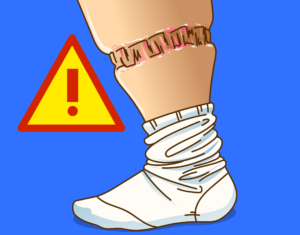

Compression garments are used to help limit the swelling that occurs in Lipedema. This swelling contributes to the progression of lipedema, and can also lead to other painful and dangerous diseases.
Chronic swelling (also called “edema”) in the legs is a risk factor for eventually developing cellulitis and venous insufficiency and is one of the primary symptoms of lipedema. A recent study showed that swelling of the legs from any cause leads to an increased risk for leg skin infections or cellulitis. For women suffering from Lipedema, this can add insult to injury in an already debilitating disease accompanied by sensitive and easily bruised skin. If left untreated, cellulitis can move into the lymph nodes and bloodstream and require more serious medical treatment, and is one of many reasons why compression therapy for lipedema patients has more than one benefit!
For patients with Lipedema, there are many reasons to consider using compression garments or compression pumps. From clinical experience, it’s been noted that Lipedema and Lymphedema patients show faster and less complicated healing after surgery when patients are undergoing MLD/pump treatment before surgery. For individuals who have lipedema, lymphedema, or lipo-lymphedema, compression garments are often used to assist lymph circulation by increasing the pressure in the tissue to propel lymph fluid through the body. Lymphedema causes excess fluid to become trapped in the extremities, especially the legs, and compression garments pressure the skin and veins, helping them clear lymph and decongest. If we can utilize the garments to decrease the levels of chronic edema, we may also decrease the chances of developing cellulitis.
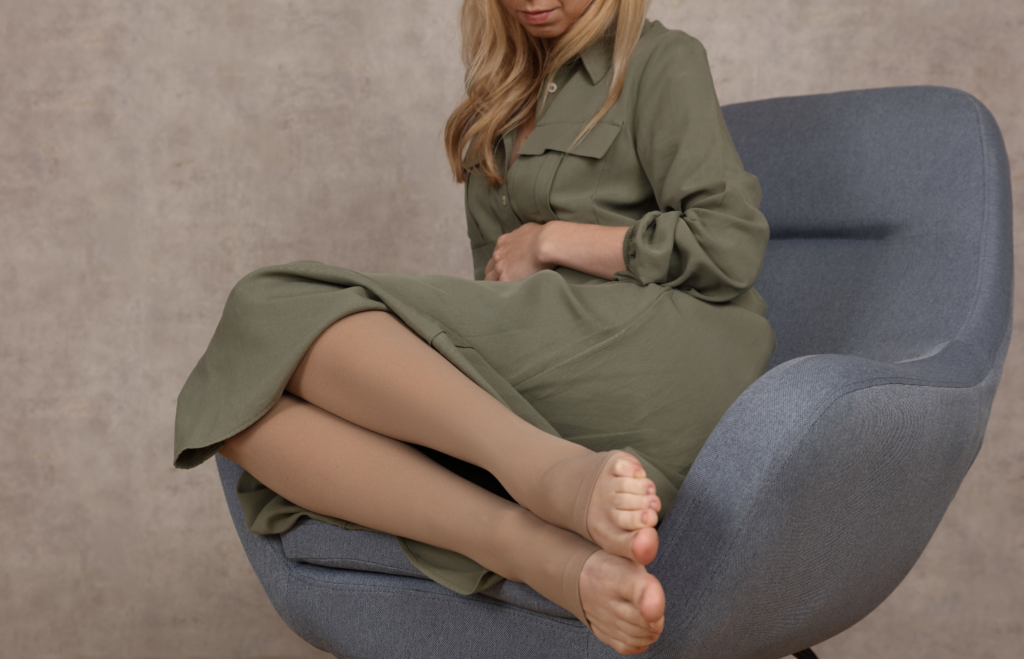

Compression garments can help reduce pain and heaviness felt in the limbs from fat disorders (such as lipedema) by decreasing swelling in the fat and throughout the limbs. Compression may also reduce the rate at which the fat cells grow and help to prevent fat disorders from progressing to more serious stages. In other words, compression can be one of the best treatments for lipo-lymphedema or fat caused by lymphatic diseases, in addition to cellulitis prevention.
Many patients don’t realize that edema (swelling) is just the beginning if untreated, and more severe conditions can occur. Skin infections, such as cellulitis, are more common in areas affected by lymphedema swelling than in normal skin, so women with lipedema have a higher likelihood of this condition. This is another reason compression therapy is imperative, whether you undergo surgery or not. If infections are not treated quickly, they may spread and become sepsis (blood poisoning or bacteremia), which can become fatal. Areas of long-term lymphedema swelling sometimes develop rare forms of cancer, such as lymphangiosarcoma or Stewart-Treves Syndrome (STS), that are frequently fatal. Any purple discoloration or tender nodules that develop on lymphedema-affected skin should be evaluated promptly by a medical professional.
Today, most doctors recommend conservative and preventative measures to keep you, such as daily washing of wounds or cuts that bacteria could infiltrate and applying protective creams, ointments, and bandages when necessary to surface damage or dehydrated, flaky skin. Preventative medications, such as antibiotics, may be recommended when patients experience several recurrences of cellulitis.
For people with poor circulation – such as diabetics or women with Lipedema and or Lymphedema, additional precautions for avoiding skin injury are recommended, but overall are still conservative and focus on healthy and consistent skincare. For example, the health providers at the Mayo Clinic recommend you inspect your feet daily, check for signs of injury or infection early on, moisturize skin regularly to avoid dryness or cracks, and trim fingers and toenails with great care to avoid injuring the skin and wear clean and protective footwear and gloves often.
Like Lipedema, there’s a lot we still don’t know about cellulitis; we know it can be caused by several types of bacteria infecting deeper layers of the skin, and we know that it causes swollen, red, painful areas in the skin. We know it commonly affects the feet and lower legs. But we don’t know how the bacteria get into the body of many people affected. And new studies suggest something else we did not know previously – compression therapy may help prevent this painful condition.
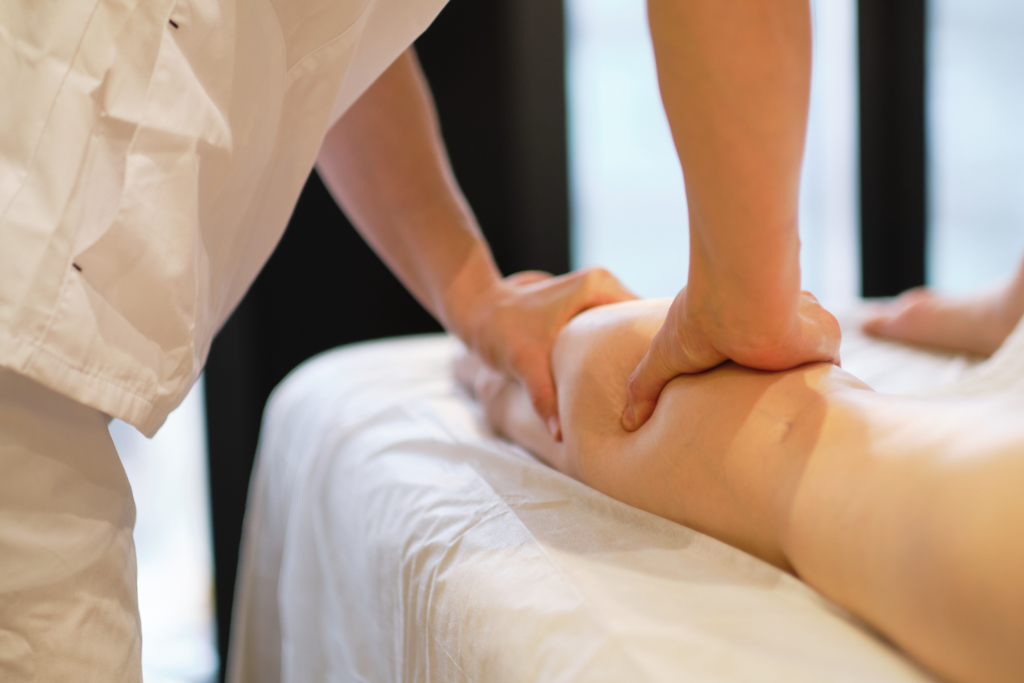

A recent study by the New England Journal of Medicine divided 84 patients into two groups. Participants in each group experienced chronic swelling in their legs and also suffered from cellulitis on an ongoing basis. In the first group, participants received compression therapy and were provided education on how to prevent their cellulitis from returning. In the second group, participants received the same education but did not undergo compression therapy. The groups returned for follow-up therapy and education every six months for up to three years, until the entire trial experienced a total of 45 cases of cellulitis. When someone in group two experienced a return of their cellulitis, they were moved to group one to under compression therapy.
Overall, the quality of life in both groups was the same, and there weren’t drastically different experiences between groups one and two. However, the group who received therapy and cellulitis prevention education experienced only 6 new cases of cellulitis, while the second group experienced 17 cases. While the study was small, and additional studies are needed, early indications suggest compression therapy will result in a lower recurrence of cellulitis than education and conservative treatments alone. We have known for years that people with lymphedema have an increased risk for cellulitis, and they benefit from compression. However, this study showed leg swelling from any cause puts affected individuals at risk for infections, and compression helps reduce this risk.
It’s essential that compression garments are appropriately measured to ensure they fit correctly. Incorrectly fitted compression can be painful and even make lipedema symptoms worse! Most cities have a medical supply store that will measure you and then help you find the appropriate garments, but if you’re ordering them online, you’ll have to measure yourself by following their guidelines. For online orders, we recommend https://www.brightlifedirect.com/ and https://www.compressionguru.com/.
Ready to Learn More about Lipedema Surgery in St. Louis? Let’s Chat!
Still not sure where to start? That’s okay! Physicians such as Dr. Wright can provide you with the needed treatment plans that it takes to reduce your lipedema symptoms. Contact us today!
An estimated 17 million women in the U.S. and nearly 370 million women across the globe suffer from a condition known as Lipedema. What is regularly associated with rapid and uncontrollable weight gain in its initial stages can spiral out of control if left undiagnosed. As experts continue researching the causes and best treatment options for women with Lipedema, tumescent liposuction or lipedema reduction surgery remains the only way to reset the progressive disease and provide women with increased mobility and reprieve from daily pain.


Lipedema is a fat disorder, mainly affecting women, that causes an enlargement of both legs due to deposits of fat under the skin. It’s characterized as a “progressive disorder,” meaning it generally worsens over time. In severe and more progressive cases, the trunk and upper body may also be affected, including the arms and upper back, and it’s often misdiagnosed and incorrectly treated as general obesity.
Lipedema is a disease that leads to the excessive buildup of fat cells, primarily in the arms and legs. Going far beyond the appearance of extra pounds, those who suffer from Lipedema often have large pockets of fat on their limbs that appear disproportionate compared to the rest of the body. Lipedema is often misdiagnosed and dismissed by medical professionals as simple obesity, leaving affected women with an endless cycle of disappointment, frustration, and pain. Lipedema does not respond to a diet and exercise routine, yo-yo dieting, or juice cleanses.
Women suffering from Lipedema often report the disease associated with painful symptoms that trigger difficulties in dealing with everyday activities. Excessive swelling often comes with pain, numbness, and bruising. In its advanced stages, Lipedema can impact mobility and provoke vascular and lymphatic swelling, leading to further medical complications.


Ultimately, effective treatment will require surgical intervention to alleviate the appearance and pain of symptoms. Liposuction performed on the affected limbs is generally the most effective treatment. Removing fat deposits that are diseased helps reduce swelling of the limbs and alleviates the pain that holds patients back from everyday activities.
This surgical treatment can provide a variety of benefits and relieve the symptoms you are experiencing from lipedema. Dealing with lipedema can be difficult, especially if you are just now starting to take control of it.
Lipedema reduction surgery is different from cosmetic liposuction. Studies have shown that women with Lipedema have impaired lymphatic function. Lymphatic fluid promotes the growth of more fat cells, which can overwhelm the lymphatic capillaries (branch-like blood vessels). Extra care must be taken to avoid injuring the lymphatic system and making an already stressed system worse. Using blunt cannulas and generous and special surgical techniques, studies have shown that lymphatic function can improve after this type of liposuction in women with Lipedema. The goal of lipedema reduction surgery is to remove the fibrous tissue and maximally reduce the lipedema tissue. It is a “debulking” surgery, not a cosmetic surgery.Why is Lymph Sparing Liposuction Preferred for Lipedema Patients?
One of the most beneficial aspects of lymph-sparing liposuction is that the treatment does not rely on general anesthesia. While general anesthesia is used for various treatments, it is generally not recommended for individuals with lipedema. Instead, lymph-sparing liposuction uses tumescent anesthesia to avoid these unwanted complications. General anesthesia can cause severe complications and even death in up to 0.3% of liposuction treatments. Relying on tumescent anesthesia ensures the anesthetic fluid has been distributed throughout the tissue, and it has had time for all the fat tissue to gel. Patients are conscious for the duration of treatment, while the tumescent liquid acts as a local anesthetic to the treatment area. Patients may take pain pills ahead of time to help with discomfort and sometimes use laughing gas. However, through the process, patients feel little pain and, if anything, pressure in the area being treated.


Perhaps the most noticeable benefit to lymph-sparing liposuction is how it can reduce the amount of subcutaneous fat tissue in the body. Lipedema reduction surgery not only significantly reduces fat tissue but also removes fibrous tissue, making the limbs lighter, smaller, less tender, and smoother. Following your physician’s guidelines is critical to reduce swelling and inflammation before the treatment. This is done by wearing compression garments and wraps along with receiving manual lymph drainage for several weeks following lipedema surgery and beyond. Patients wear medical-grade compression clothing for at least eight weeks, and manual lymph drainage and massage are typically recommended as an ongoing and regular treatment.
Your tissue will be decongested, allowing your liposuction treatment to be as successful as possible. Some slight swelling and bruising may return immediately following the procedure, but this is expected and should subside over time. Some patients also report numbness as their nerves in the treated areas respond to treatment. Numbness may last for several months and up to one year, but compared to the reduction in fat tissue, patients still see this as a huge improvement. Compression is critical to be maintained after the lipedema surgery as well, as the lymphatics are re-established. The lymphatic function is often improved.
By reducing the amount of subcutaneous fat tissue, you can reduce any pain associated with lipedema. Lipedema reduction surgery, which is sometimes referred to as Lymph sparing liposuction, will be able to help you increase mobility without having the pain you have been feeling with lipedema since it started. This is huge for women with lipedema, especially because the pain and bruising is the leading symptom of seeking treatment. Women report a significant improvement in their ability to move around more freely, exercise more regularly, and enjoy day-to-day activities that were previously off-limits. Bumping into a chair or a corner no longer causes large bruises, playing with the family dog doesn’t cause pain when they jump, and everyday activities are no longer considered out of reach.
Significant blood loss is the most commonly reported side effect of lipedema surgery. Women with lipedema very often have large varicosities and studies have shown enlarged networks of veins in the legs of women with lipedema. Liposuction can cause significant blood loss if these veins are not treated before surgery. Even with proper preoperative treatment of dilated and varicose veins and good tumescent technique in women with lipedema, if the surgery is large enough, there can still be significant blood loss. In some cases even a blood transfusion has been needed in the postoperative period. The next most common complication of lipedema reduction surgery or lipedema liposuction is blood clots. Women with lipedema are, on average, heavier than women without lipedema making the risk of blood clots with the surgery greater. The risk of blood clots and other thrombotic complications can be greatly reduced with postoperative blood thinners. Careful surgeons should risk stratify their patients for possible blood clot complications and put them on prophylactic postoperative blood thinners. Infection is always a risk of any surgery including lipedema surgery. There has been a report of fat embolism with lipedema surgery. Death has to be included as a possible outcome. We are not aware of any deaths from lipedema surgery, but of course it is possible that any surgery can, in very rare circumstances, result in death. Finally, lymphatic injury is a real risk of liposuction and is a special concern for women with lipedema. Smaller cannulas are also used to keep down the risk of trauma to the body and an already compromised lymphatic system. With care and proper surgical technique lymphatic injury need not occur. In fact in skilled surgical hands lipedema reduction surgery may actually improve lymphatic function.
While the recovery can get painful, especially in more heavily used areas such as the arms and calves, patients will report that the payoff is well worth it. Lipedema fat more often accumulates around the lower body, including the thighs and buttocks. Women will often see the majority of their Lipedema fat in these areas. However, they can also commonly find Lipedema fat accumulation around the inner knee and backside of their leg. After the removal of lipedema tissue in these areas, patients are not only more mobile and can get around more easily, but they experience far less pain in their daily lives.


This procedure allows for a more active and healthy lifestyle, which many patients have experienced for years (and in some instances, it’s been decades). If paired with proper compression therapy, a healthy diet, tons of water for hydration, and responsible maintenance, women with lipedema are afforded a much higher quality of life and more enjoyable day-to-day. The reduction of irregular and heavy fat can improve joint function, making everyday tasks such as walking, climbing stairs, tying shoes, or even getting up from a chair much easier than before. Normal tasks that many take for granted are daunting and painful for women with lipedema, and lymph-sparing liposuction can help reset the clock by several years to help.
While lymph-sparing liposuction for lipedema is generally safe in healthy individuals, risks such as infection, bleeding, and trauma to the area may occur. Post-operative swelling in the limbs after surgery, which occurs with any liposuction procedure, is more prolonged in individuals with lipedema. The swelling typically worsens for a few months before it gets better, and the full benefit may not be realized for six months to a year. However, overall, most patients with lipedema experience significant improvement of many or all of their symptoms, with varying individual results. It’s not uncommon for Dr. Wright and his team to complete the procedure, and their patient notices a change before they leave the office, especially when large amounts of fat tissue are removed.
Although some people who have lipedema in one specific area may need only one procedure, most people undergo multiple lymph-sparing liposuction procedures to address all the different areas affected by lipedema. The multiple liposuction procedures must be staged or separated to be done safely. The timing of the procedures depends on multiple factors, including the clinical stage of lipedema in the patient, the amount of fat being removed, the patient’s health and mobility, and other logistical factors. Generally, each procedure should be spaced out by at least three months to allow for proper recovery.
After the lipedema surgery, patients go home the same day but should be sent home already in their compression garments. The first afternoon after surgery should be spent resting, and it’s likely patients are extremely drowsy from the procedure and medications. The following day post-op check-in should be completed before returning home. Patients will be sore and will continue to experience drainage of tumescent fluids. Padding around the incision points is required for several weeks. Compression garments are worn around the lock for the first several weeks, then worn during the daytime hours only before eventually tapering off after 12 weeks.
As you can see, lymph-sparing liposuction has plenty of exciting benefits. This procedure can make living easier with unwanted symptoms such as difficulty with mobility, pain, and tenderness. Physicians like Dr. Wright can provide you with the needed treatment to reduce your lipedema symptoms. Contact us today!


One of Dr. Wright’s newer patients, Crystal, was diagnosed with Lipedema for the first time just 3 months ago, and she’s already feeling the joy and relief that comes with an official Lipedema diagnosis.
“I felt a sense of relief and joy come over me instantly,” she says.
Crystal was diagnosed by Dr. Wright with Stage 3, Type 3, and 4 Lipo-Lymphedema. Over the next 90 days post-diagnosis, she’s undergone two Lipedema surgeries and overcome a lifetime of challenges when it came to “her relationship with gravity”, as she calls it. She lost just over 70 pounds after the two surgeries and is relieved to be on a path of healing.
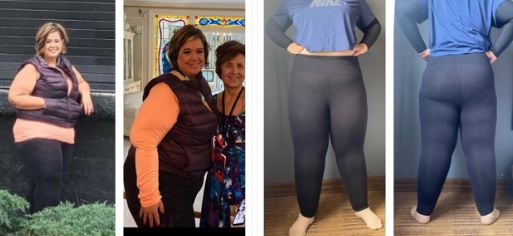

Lipedema is a fat disorder, mainly affecting women, that causes an enlargement of both legs due to deposits of fat under the skin. It’s characterized as a “progressive disorder,” meaning it generally gets worse over time. In severe and more progressive cases, the trunk and upper body may also be affected, including the arms and upper back, and it’s often misdiagnosed and incorrectly treated as general obesity.
Nearly 17 million women in the U.S. and nearly 370 million women across the globe suffer from Lipedema. What is regularly associated with unruly weight gain in its initial stages can quickly spiral out of control if left undiagnosed. Often striking in a woman’s mid-20s, Lipedema is a disease that leads to the excessive buildup of fat cells primarily in the arms and legs. Going far beyond the appearance of extra pounds, those who suffer from Lipedema often present with pockets of fat on the limbs that appear disproportionate in comparison to the rest of the body.
Women suffering from this disease often report the association with lipedema pain symptoms that trigger difficulties dealing with everyday life activities. Excessive swelling often comes with pain, numbness, and bruising. In its advanced stages, Lipedema can impact mobility and provokes vascular and lymphatic swelling which can lead to further medical complications.
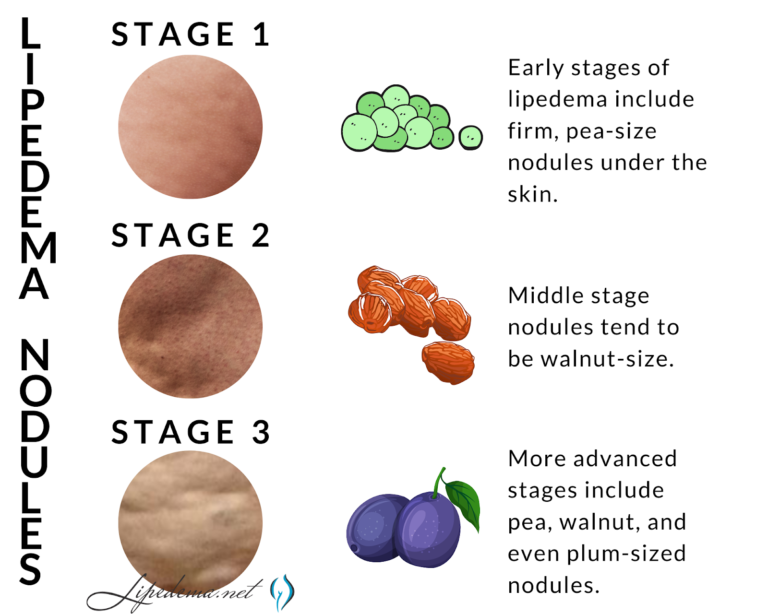

Lipedema is often misdiagnosed as standard obesity, leaving patients to deal with an endless cycle of disappointment and ongoing, painful lipedema symptoms. As they continue, their weight refuses to fall off. Unfortunately, Lipedema does not respond to a simple calorie restriction or increased exercise and ultimately requires surgical intervention in order to alleviate the appearance and pain of symptoms.
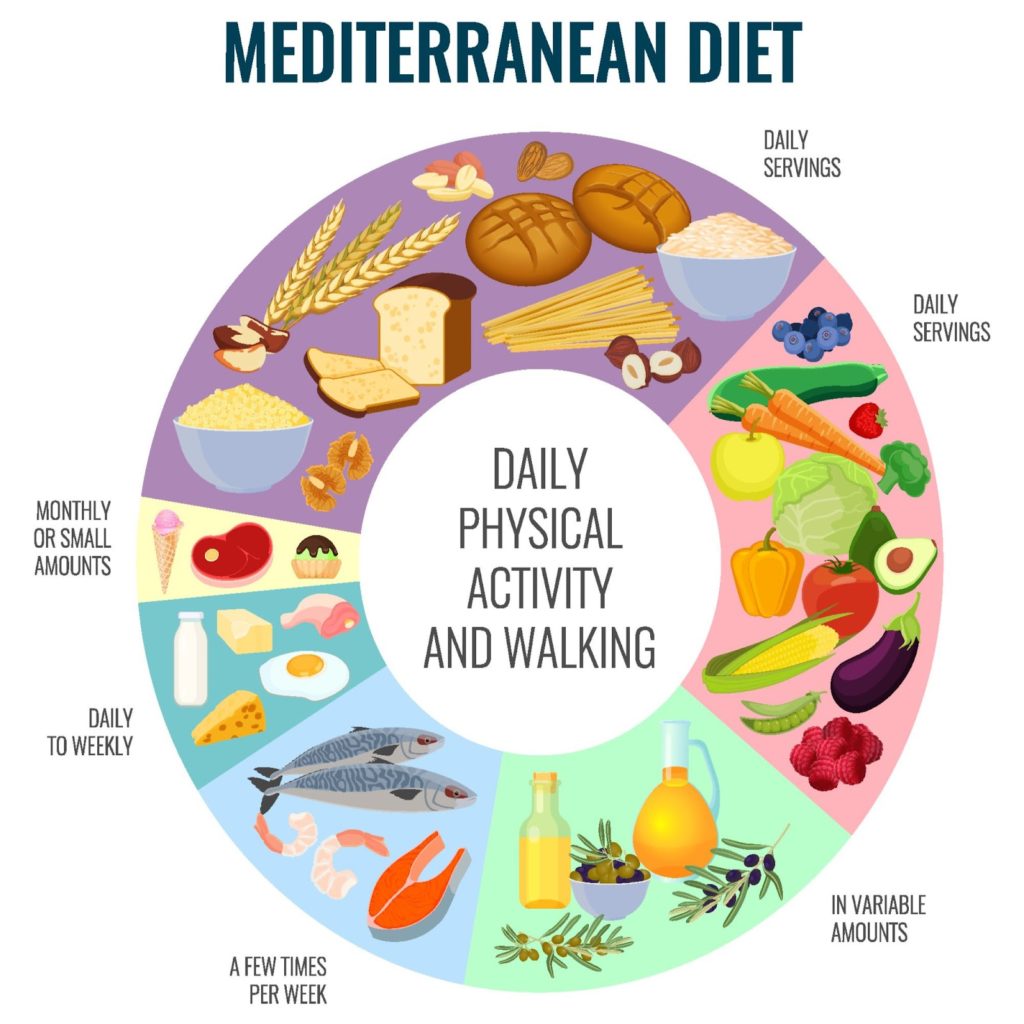

Patients often report that the road to their initial Lipedema diagnosis is an uphill battle. Women with Lipedema are typically diagnosed by their primary care provider with traditional obesity, and all treatment methods follow this diagnosis.
Unfortunately, as any Lipedema specialist will tell you, this treatment proves ineffective, and leaves women with Lipedema without answers, without a solution, and with continued pain and continued frustration as their, Lipedema continues to progress. Liposuction performed on the affected limbs is one of the most effective forms of treatment. Removing fat deposits that are diseased not only helps reduce swelling of the limbs but alleviates the pain that holds patients back from everyday activities. But before women with Lipedema and even consider these procedures and treatment options, they must first find a doctor who is an expert in this field and start with a proper diagnosis of the disease.
Just like Crystal, many women search for answers for years before getting an official diagnosis and validation for their struggles. “My body really needed this healing,” Crystal says. “I needed answers and I was craving [an] explanation why my body was fighting me.” While she contributes 15 pounds lost directly to her surgeries, she says she’s done the non-surgical work to get rid of additional lipedema swelling and fluid alongside surgery. She says she monitors what she eats and when, and eliminated a few types of foods that directly increase swelling, helping her lose more than 50 pounds on her own, and improving the outcomes of both her surgeries tenfold.
She encourages other women who think they may have Lipedema to contact Dr. Wright and his team to get the same help she’s received. “If you have lipedema or lipo lymphedema like I do, go easy on yourself,” she says. “There isn’t anything you could have done to prevent it, but I’m living proof there are things you can do to live better and have a higher quality of life.”
Before tackling the issues and symptoms associated with lipedema, it is important to assess your vein health by working closely with a vein specialist. Vein issues and lipedema, both can cause painful, heavy legs, and tenderness, so it can be difficult to know if your symptoms are related to veins or solely to lipedema. An experienced vein specialist can get you on the right path to a diagnosis and treatment plan.
Many women with lipedema require lifelong use of compression garments, so the advantages of treating vein issues are somewhat limited. Plus, unfortunately, edema in the legs of lipedema patients generally does not significantly improve after vein treatment. However, lipedema reduction surgery can at least temporarily treat venous insufficiency. Vein issues and issues with the lymphatic system are connected.
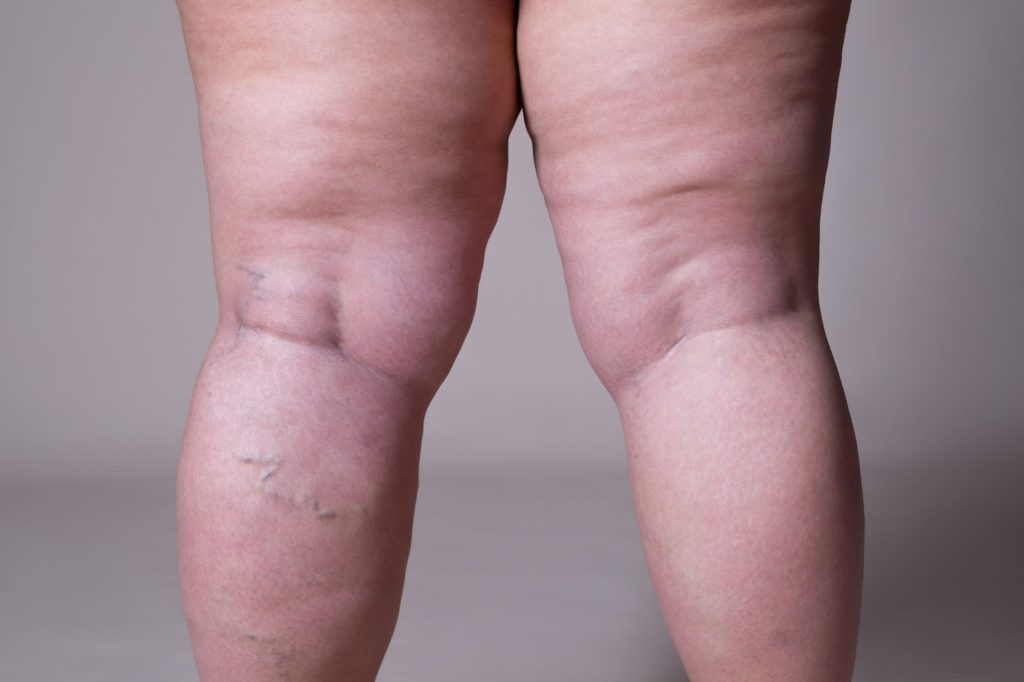

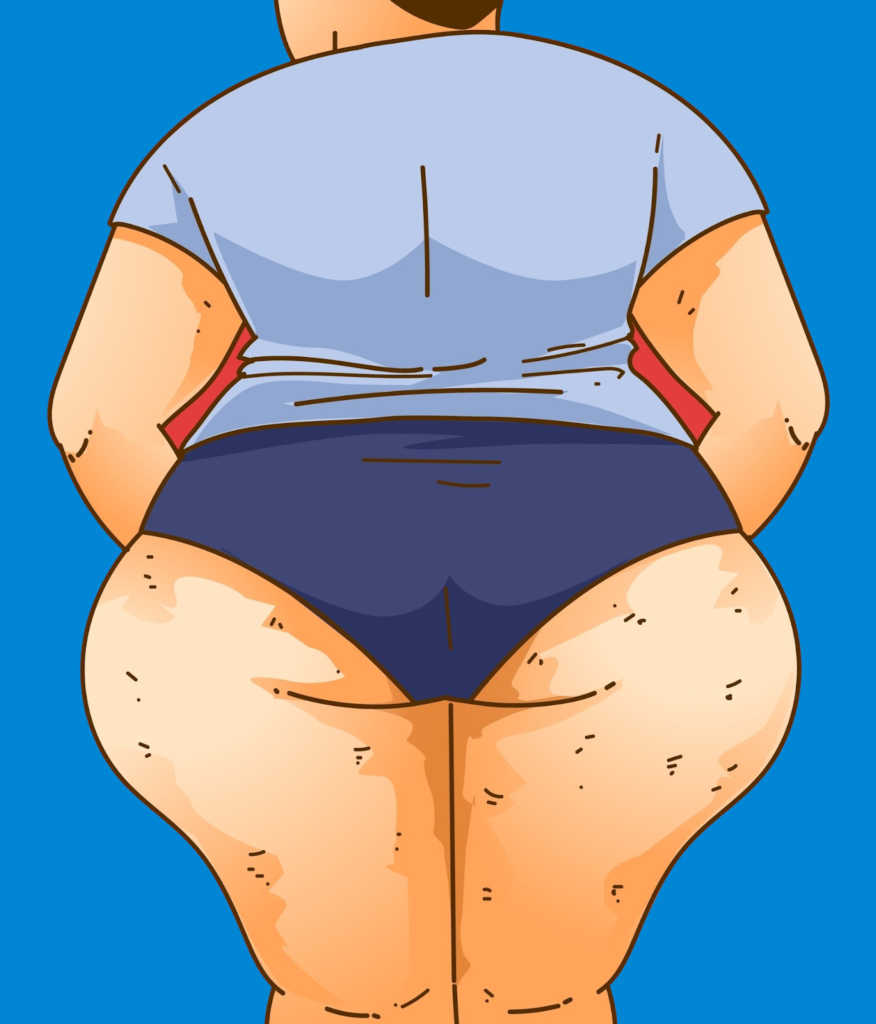

Lipedema is a fat disorder, mainly affecting women, that causes an enlargement of both legs due to deposits of fat under the skin. It’s characterized as a “progressive disorder,” meaning it generally gets worse over time. Sufferers living with lipedema experience easy bruising and tenderness, pain in the affected areas, and significant disability in daily life. In severe and more progressive cases, the trunk and upper body may also be affected, including the arms and upper back. Little is known about the disorder, and it’s often misdiagnosed and incorrectly treated as general obesity.
Lipedema reduction surgery is a spin-off of liposuction focused on the reduction of lipedema tissues including fibrous tissue, fat, and extracellular contents. It is possible for lymphatics to be injured by a suction cannula during lipedema reduction surgery and/or cosmetic liposuction. Some argue whether this is possible, but studies show it can, and unfortunately, may happen for some. So, it is important if you have lipedema, or suspect you may have lipedema that you get a proper diagnosis and work closely with skilled surgeons well-versed in lipedema, lymphatics and lymphedema for the best possible outcomes and treatment plan before you proceed with any type of liposuction.
According to a study by Wright and Herbst, in patients with normal lymphatic function, and no severe injury to the lymphatic collectors, the lymphatic system almost always recovers and returns to a normal state. Suction lipectomy with small blunt cannulas and surgical techniques that focus on avoiding lymphatic damage have been reported to halt lipedema progression. A modification of suction lipectomy can result in alleviating or at least improving the swelling, leg heaviness and fatigue, the need for limb compression, and the need for lymphatic massage in women with lipedema. In patients with an impaired lymphatic function such as chronic lymphedema (or lipedema), careful suction lipectomy using techniques to avoid lymphatic injury can result in improved lymphatic function and a decreased rate of secondary infection or cellulitis in the affected limbs.
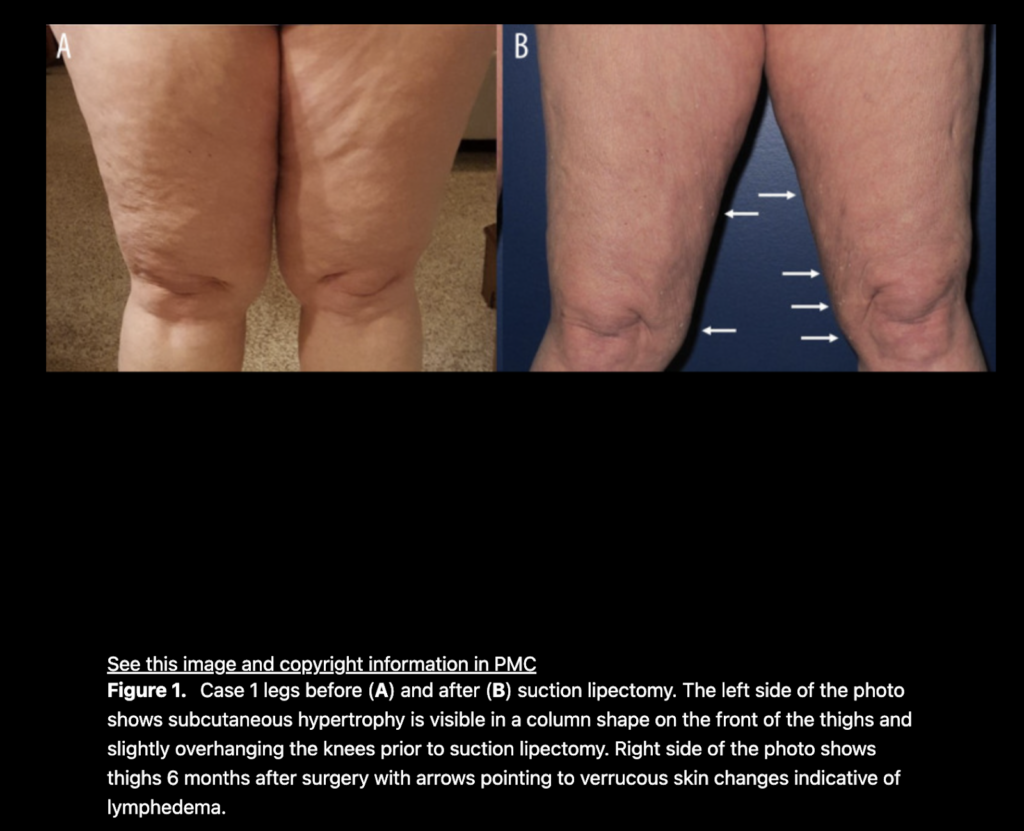

There are well-documented changes in the lymphatics of women with lipedema. The lymphatics are dilated and tortuous. Here are the differences between lipedema and lymphedema:
Protective measures to lessen risk of lymphatic injury include:
The short answer is this issue is hard to study as it is not possible to examine on live patients. There is one study by Hoffman which showed a longitudinal cannula technique and tumescent solution caused less injury to the lymphatics post-mortem. There is some evidence that the preoperative mapping of venous and lymphatic structures can lower the risk of lymphatic injury. While there is clear evidence lymphatic injury can occur, there is no definitive proof of what surgical techniques can prevent lymphatic injury from liposuction or lipedema reduction surgery. Lymphatic injury complications are poorly recognized after suction lipectomy surgeries and therefore are less likely to be reported in the literature for both lymphedema and lipedema.
—
References
Crescenzi R, Marton A, Donahue PMC, Tissue sodium content is elevated in the skin and subcutaneous adipose tissue in women with lipedema: Obesity (Silver Spring), 2018; 26(2); 310-17.
Hoffmann JN, Fertmann JP, Baumeister RG, Putz R, Frick A. Tumescent and dry liposuction of lower extremities: differences in lymph vessel injury. Plast Reconstr Surg. 2004 Feb;113(2):718-24; discussion 725-6. doi: 10.1097/01.PRS.0000101506.84361.C9. PMID: 14758241.
Iker E, Mayfield CK, Gould DJ, Patel KM, Characterizing lower extremity lymphedema and lipedema with cutaneous ultrasonography and an objective computer-assisted measurement of dermal echogenicity: Lymphat Res Biol, 2019; 7(10); 525-30.
Peprah K, MacDougall D: Liposuction for the treatment of lipedema: A review of clinical effectiveness and guidelines, 2019, Ottawa (ON), Canadian Agency for Drugs and Technologies in Health.
Rasmussen 2022. Lymphatic function and anatomy in early stages of lipedema
It also well reported that higher stages of lipedema are associated with impaired lymphatic functioning. ,7–9].
The Diagnosis and Treatment of Peripheral Lymphedema: 2016 Consensus Document of the International Society of Lymphology: Lymphology, 2016; 49(4); 170-84.
Wright TF, Herbst KL. A Case Series of Lymphatic Injuries After Suction Lipectomy in Women with Lipedema. Am J Case Rep. 2022 Jul 11;23:e935016. doi: 10.12659/AJCR.935016. PMID: 35811389; PMCID: PMC9284075.\